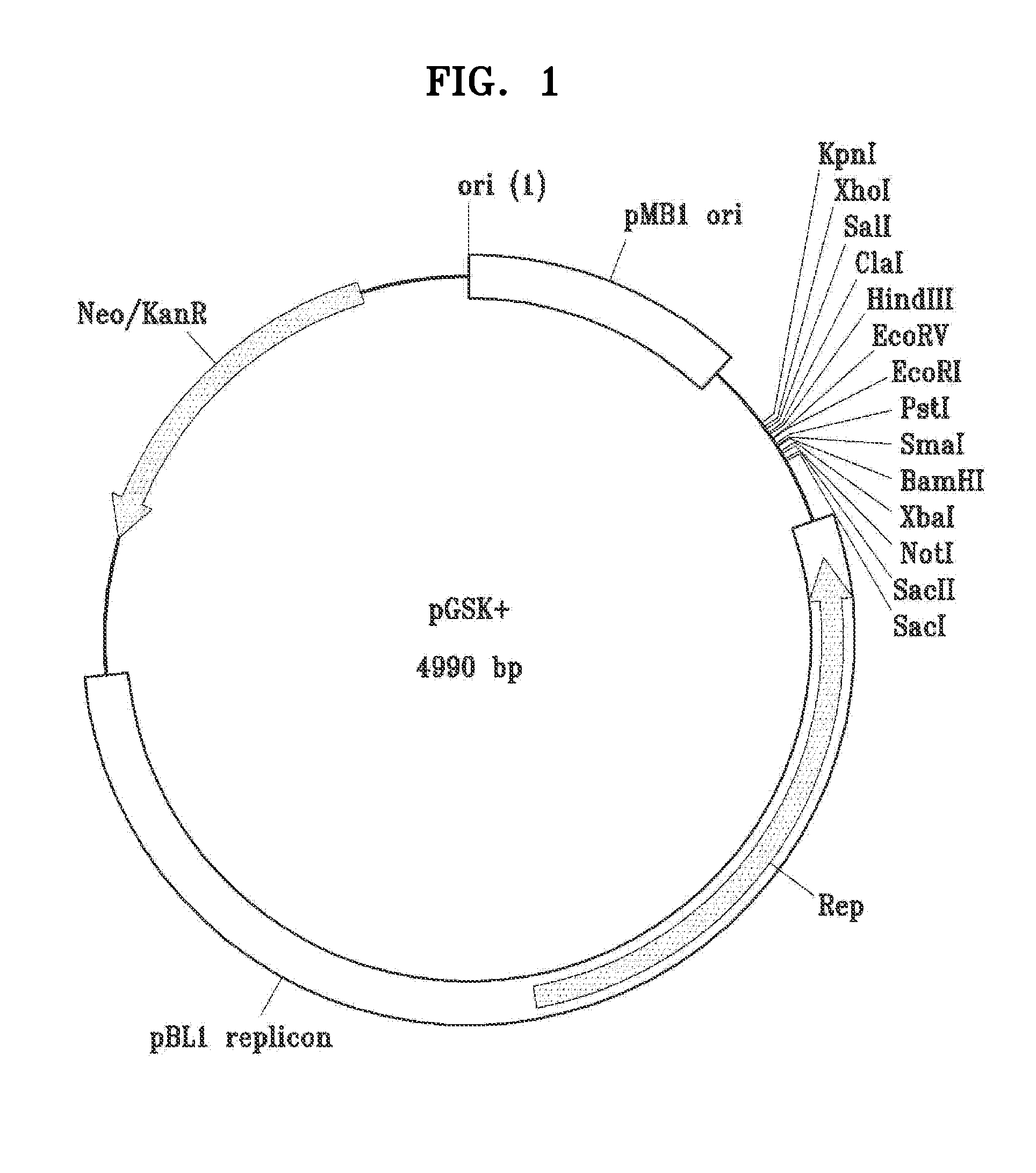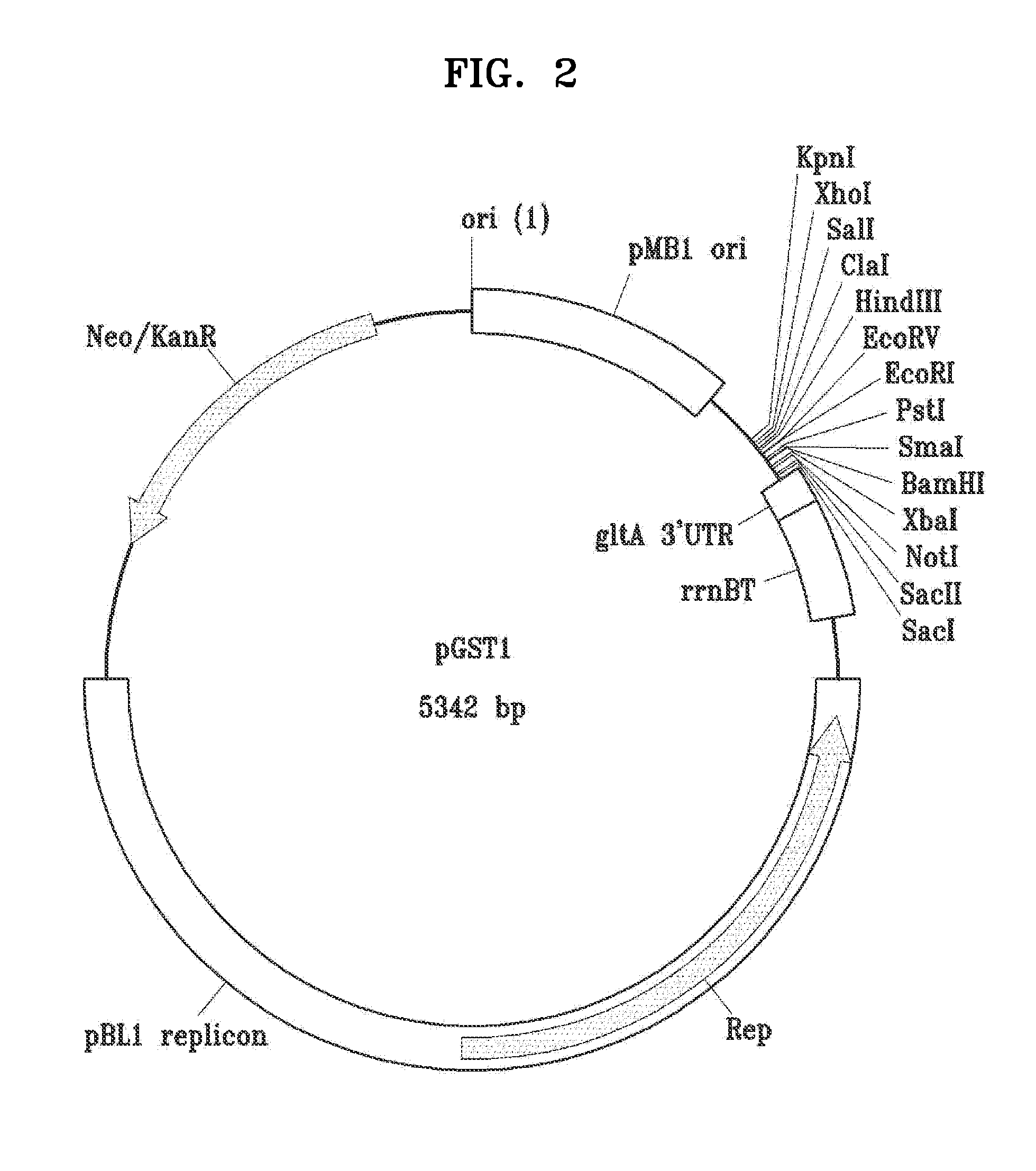Genetically engineered bacterial cell and method of producing succinic acid using the same
a technology of bacterial cells and bacterial cells, applied in the field of genetically engineered bacterial cells and a method of producing succinic acid, to achieve the effects of increasing glucose consumption rate, increasing activity, and increasing succinic acid productivity
- Summary
- Abstract
- Description
- Claims
- Application Information
AI Technical Summary
Benefits of technology
Problems solved by technology
Method used
Image
Examples
example 1
Confirmation of Effect of Succinic Acid on Production of Succinic Acid by Corynebacterium
[0116]An effect of succinic acid on production of succinic acid by Corynebacterium was confirmed by culturing Corynebacterium in the presence of succinic acid and measuring a glucose consumption rate and an amount of succinic acid production.
[0117]First, in order to confirm inhibition of glucose consumption and succinic acid production by succinic acid in Corynebacterium, a succinate inhibition assay was performed on a Corynebacterium S003 strain (Δldh, Δpta-ackA, ΔpoxB, and ΔactA).
[0118]In particular, for a seed culture, the strain was streaked on an active plate including agar 5 g / L of yeast extract, 10 g / L of beef extract, 10 g / L of polypeptone, 5 g / L of NaCl, and 20 g / L of agar, and then cultured at a temperature of 30° C. for about 48 hours. A single colony obtained therefrom was inoculated in 5 ml of a BHIS medium (including 37 g / L of brain-heart infusion agar, 91 g / L of D-sorbitol, pH 7...
example 2
Search for Gene Related to Suppression of Glucose Uptake and an Amount of Succinic Acid Production by Succinic Acid
[0124]In this example, the Corynebacterium glutamicum S003 strain was cultured in the presence of succinic acid, and the transcriptome thereof was analyzed by using a microarray to confirm change in the transcriptome caused by the presence of succinic acid.
[0125]First, in order to establish conditions for microarray analysis, a glucose uptake rate per time according to a concentration of succinic acid was confirmed. Samples were obtained from the strain cultured under the same flask test condition as in Example 1 after 5 hours, 15 hours, and 24 hours to confirm the glucose uptake rate.
[0126]As the result, glucose uptake was suppressed within the first 5 hours when 0.0625 M succinic acid was added to the medium, but a glucose uptake rate was the same with that of a strain in a control group after 15 hours (see FIG. 5). FIG. 5 illustrates a glucose uptake rate according t...
example 3
Confirmation of Effect of Overexpression of Fourteen Succinate-Repressible Genes on Glucose Uptake and Succinic Acid Production
[0129]The result of Example 1 implies that accumulation of succinic acid causes expression of the genes to be reduced, and thus succinic acid production and glucose uptake rate are suppressed. Thus, suppression of the gene expression by succinic acid is resolved by overexpressing the genes under the control of a tuf promoter, which is a constitutive promoter.
[0130]In this example, an effect of overexpression of the fourteen SRGs confirmed in Example 2 on glucose uptake rate and succinic acid production was confirmed.
[0131]A strain that overexpresses the fourteen SRGs was obtained by cloning the SRGs to Xhol / BamHI restriction site of a pGEX-4 vector to be expressed under an influence of a Ptuf promoter as described in “2. Preparation of pGEX_Ptuf::Ncgl1853, Ncgl1855, Ncgl2988, Ncgl2425, Ncgl2404, Ncgl0368, Ncgl2877, Ncgl0275, Ncgl2359, Ncgl1525, Ncgl0976, Ncg...
PUM
| Property | Measurement | Unit |
|---|---|---|
| temperature | aaaaa | aaaaa |
| temperature | aaaaa | aaaaa |
| temperature | aaaaa | aaaaa |
Abstract
Description
Claims
Application Information
 Login to View More
Login to View More - R&D
- Intellectual Property
- Life Sciences
- Materials
- Tech Scout
- Unparalleled Data Quality
- Higher Quality Content
- 60% Fewer Hallucinations
Browse by: Latest US Patents, China's latest patents, Technical Efficacy Thesaurus, Application Domain, Technology Topic, Popular Technical Reports.
© 2025 PatSnap. All rights reserved.Legal|Privacy policy|Modern Slavery Act Transparency Statement|Sitemap|About US| Contact US: help@patsnap.com



